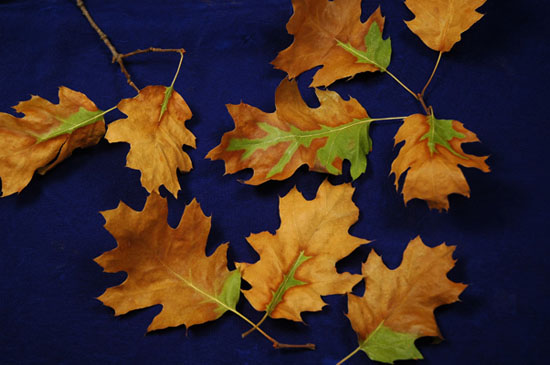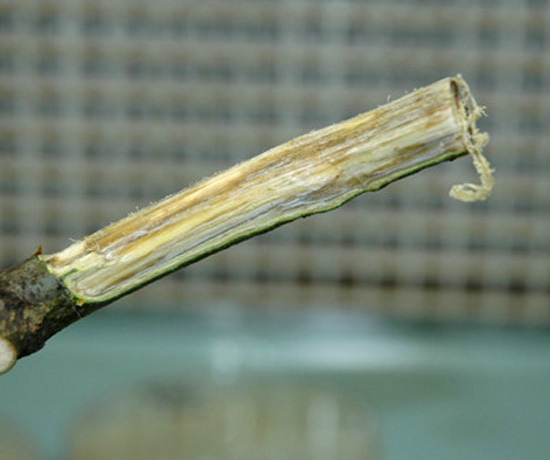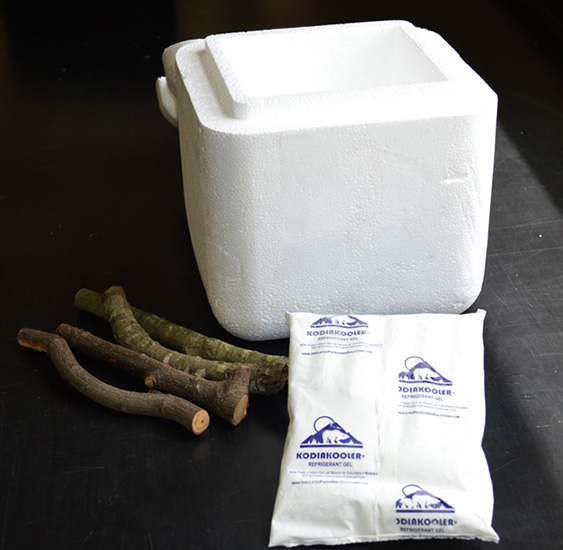Issue 10, June 28, 2013
Recommendations for sending suspected oak wilt samples to the U of I Plant Clinic
Summer has arrived. Along with the new season, comes days with extreme temperatures. High temperatures have the potential to kill plant pathogens and thwart diagnostic efforts before the samples arrive at the Plant Clinic. The pathogen responsible for oak wilt is a good example. This fungal pathogen is intolerant of temperatures above 90°F. It is also thought to be sensitive to drying and other competing fungi. Exposure to these conditions during shipping may result in inconclusive text results. Properly packaging and shipping samples will greatly help reduce the potential for an inconclusive diagnosis.
When sending an oak wilt sample, start by selecting a branch showing early symptoms of the disease. Oak wilt symptoms will vary by host. In general, oaks in the red group develop discolored and wilted leaves at the top of the tree or at the tips of the lateral branches in late spring and early summer. Leaves curl slightly and turn a dull, pale green, bronze, or tan, starting at the margins. The infection progresses rapidly. Usually, an infected tree will drop all its leaves by late summer.

Photo 1. Oak Wilt Symptoms or Northern Red Oak. Photo Credit: Nancy Pataky
Infection of hosts within the white oak group, tend to progress slowly, over several years. Leaves on infected white oaks become light brown or straw colored from the leaf tip, progressing toward the base. The leaves curl and remain attached to the branches. The disease is often confused with general dieback, decline, or anthracnose.
Infected branches from both oak groups should show symptoms of vascular streaking. Peeling back the bark of an infected branch will reveal sap wood with steaks of brown discoloration.

Photo 2. Oak wilt with vascular streaking symptoms. Photo Credit: Nancy Pataky
Sample Collection and Submission Tips
- Collect suspected oak wilt samples from a living branch showing early symptoms of the disease. The pathogen will not survive in dead or dry branches.
- Try to send branches with symptoms of vascular streaking. Our best chance of isolating the pathogen occurs when culturing tissues with vascular streaking.
- Mail samples the same day they are collected, or refrigerate and mail them soon after.
- Send samples early in the week. This will help to prevent samples from being held over the weekend in a hot mail truck.
- Higher rates of successful isolation occur with samples that’s were kept cool. When possible, send samples in an inexpensive cooler with a disposable ice pack.
- Clinic results for oak wilt testing often take 7-14 days to complete. The Plant Clinic will send a detailed report with recommendations when the results are available.

Photo 3. When possible, send suspected oak wilt samples in an inexpensive cooler with a disposable ice pack.
Author:
Travis Cleveland